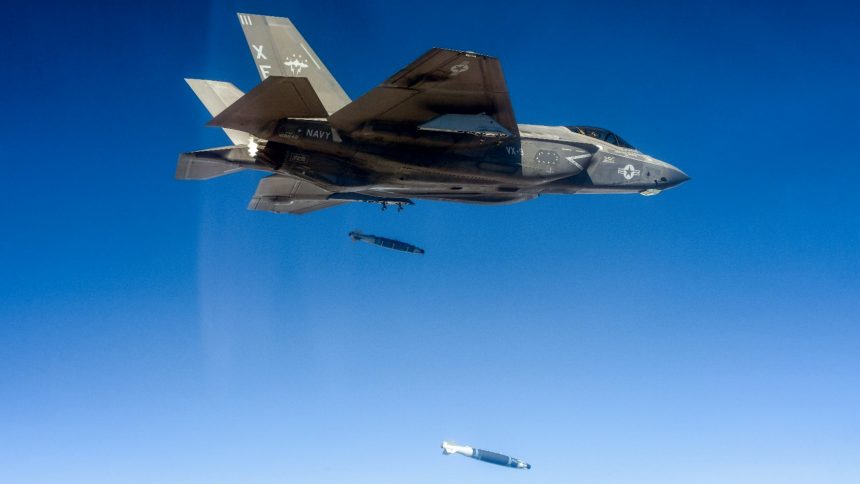An F-35C of VX-9 assigned to the United Operational Test Team at Edwards AFB performed the first dual drop of externally mounted GBU-54 LJDAM bombs, engaging a remote controlled High-Speed Moving Target.
The U.S. Air Force has announced that the United Operational Test Team conducted the first ever dual release of externally mounted GBU-54 LJDAMs (Laser Joint Direct Attack Munition) from an F-35. The test saw an F-35C, assigned to the U.S. Navy’s Air Test and Evaluation Squadron Nine (VX-9) release the guided bombs again a remote controlled High-Speed Moving Target, said the statement.
The test
The statement did not state when the test was performed, while the photo’s caption mentioned Jan. 30, 2024. However, going by the VIRIN (Visual Information Record Identification Number) naming convention used by the U.S. Department of Defense, the photo was taken on Jan. 30, 2025.
The test was performed in the ranges around Edwards Air Force Base, California, possibly at the Precision Impact Range Area (PIRA), where the Air Force employs remotely controlled mobile targets. A few years ago, the service also tested there new self-driving vehicles to increase the number of targets available and the possibilities that the range can offer during testing.
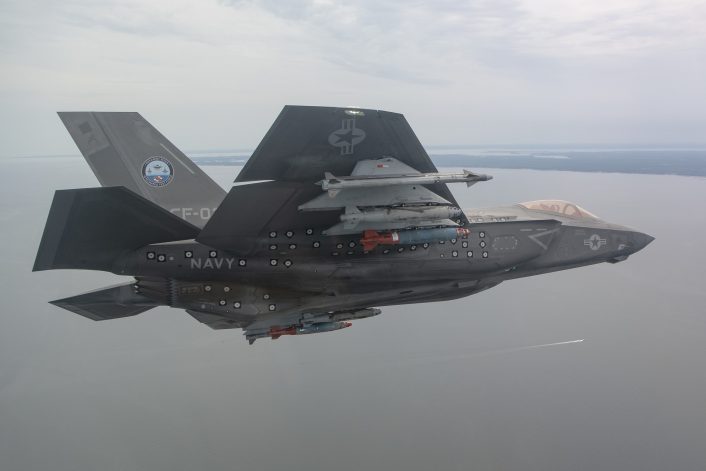
The service highlighted that the bombs were guided to the target via the onboard laser housed inside the F-35’s Electro Optical Targeting System (EOTS). In order to test the new capability in an operationally relevant environment, the weapons were employed under the control of a Joint Tactical Air Controller (JTAC), simulating a common scenario that can be expected on the battlefield.
“The capability to carry LJDAMs externally will greatly increase the air-to-surface strike capability of the aircraft,” said U.S. Navy’s Cmdr. Michael “Squintz” Procelli, the F-35’s pilot. “This WDE [Weapon Delivery Event] expands the Joint Strike Fighter’s flexibility when countering asymmetrical threats with more kinetic options.”
Among the objectives were the test of the safe separation and guidance of the weapon, as well as to determine how the F-35’s Stores Management System reacted to releasing multiple LJDAM weapons in quick succession. “The successful completion of this test demonstrates the F-35’s ability to accurately engage targets in a dynamic and challenging environment and highlights the advanced capabilities of the EOTS system,” said the Air Force.
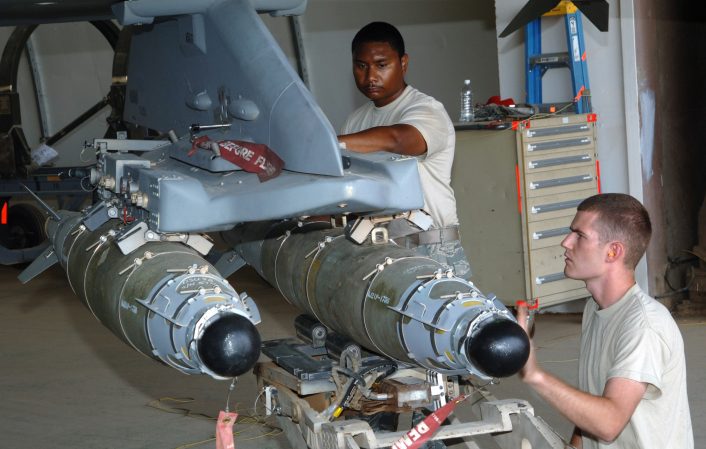
The GBU-54
The GBU-54 LJDAM is a precision-guided bomb based on the GPS-guided GBU-38 JDAM with the addition of a DSU-38/B laser seeker which gives it a dual GPS and laser guidance. The GBU-54 is released like a standard JDAM and guided towards the target by the GPS and INS (Inertial Navigation System), with the laser guidance taking over during the terminal flight to allow it to accurately strike static and moving surface targets.
The weapon made its combat debut in 2008 and since then has become a staple in the loadout of U.S. aircraft deployed abroad, complementing the GBU-38. The GBU-54 can readily be employed by all aircraft already capable of employing the GBU-38, with testing now in progress to fully integrate it on the F-35.
The Air Force said the GBU-54 LJDAM’s capability to precisely strike both moving and static targets makes it a valuable addition to the F-35’s air-to-surface munitions catalog. “The integration and successful test of the LJDAM on the F-35 marks a key milestone in the continuing effort to fully integrate the LJDAM on all versions of the F-35,” added the statement.
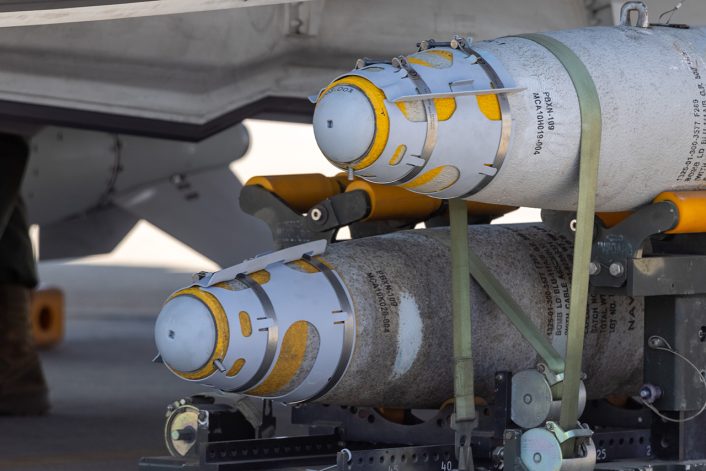
Weapon testing on the F-35
The GBU-54 Laser JDAM is the latest among multiple new weapons being integrated on the F-35. Among them are the GBU-53 SDB II (Small Diameter Bomb II) and the AGM-158C Long-Range Anti-Ship Missile (LRASM).
The GBU-53 SDB II, also known as StormBreaker is a precision glide bomb which has the capability to receive updated target coordinates by airborne or ground controllers mid-flight via two-way datalink communications, making it a fully networked standoff weapon.
Similarly to the LDJAM, the GBU-53 can be employed against both stationary and moving targets. Upon release, the weapon is guided towards the target area by the GPS and INS, before its tri-mode seeker, which includes an IIR (Imaging Infrared) sensor, a millimeter wave radar and a semi-active laser, takes over for the terminal flight’s guidance.
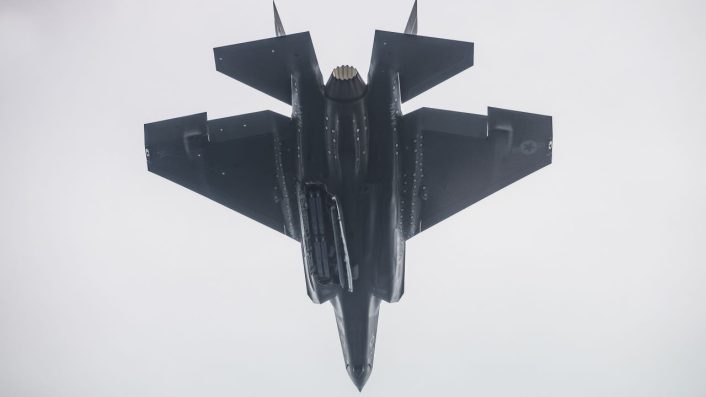
StormBreaker‘s small size enables the use of fewer aircraft to take out the same number of targets as larger weapons that require multiple jets. For instance, the F-35 can carry up to 8 SDB IIs internally by using two BRU-61A racks, each with four weapons. Raytheon, which produces the weapon, said in 2024 that the weapon achieved a 100 percent success rate on all the 14 planned jettisons from the F-35C.
The AGM-154C LRASM has a completely different use compared to the GBU-53 and GBU-54, as it provides a new standoff anti-ship capability to the F-35. The weapon is the anti-ship variant of the AGM-158 Joint Air-to-Surface Standoff Missile (JASSM).
Once launched, LRASM guides to an initial point using a GPS guidance system and employs onboard sensors to locate, identify, and provide terminal guidance to the target. Semi-autonomous guidance algorithms will allow it to use less-precise target cueing data to pinpoint specific targets in the contested domain.
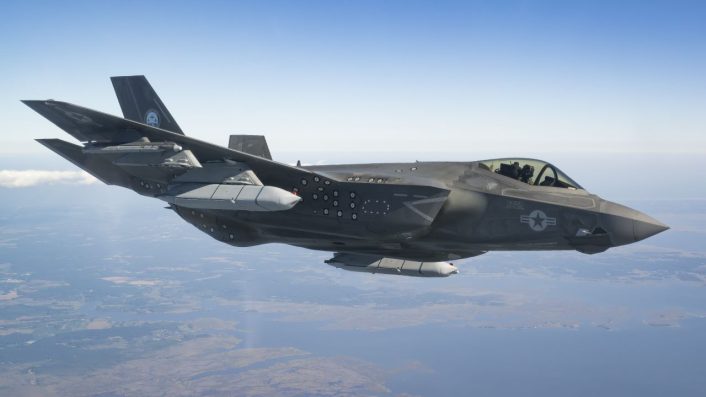
The U.S. Navy started the testing phase of LRASM on the F-35 in 2024. A downside is that the LRASM can only be carried by the F-35C externally on the wing hardpoints, since it is too large to fit inside its weapons bays. The weapon will also be integrated on the F-35B.
There are currently three variants which comprise the OASuW Increment 1 program, designated LRASM 1.0, LRASM 1.1, and LRASM C-3. The LRASM 1.0 variant, which was fielded with early operational capability in 2019, has already been integrated on the B-1B Lancer and F/A-18E/F Super Hornet. The newer LRASM 1.1 variant was fielded last year and is undergoing Initial Operational Test & Evaluation this year, according to the Director, Operational Test and Evaluation’s report.

